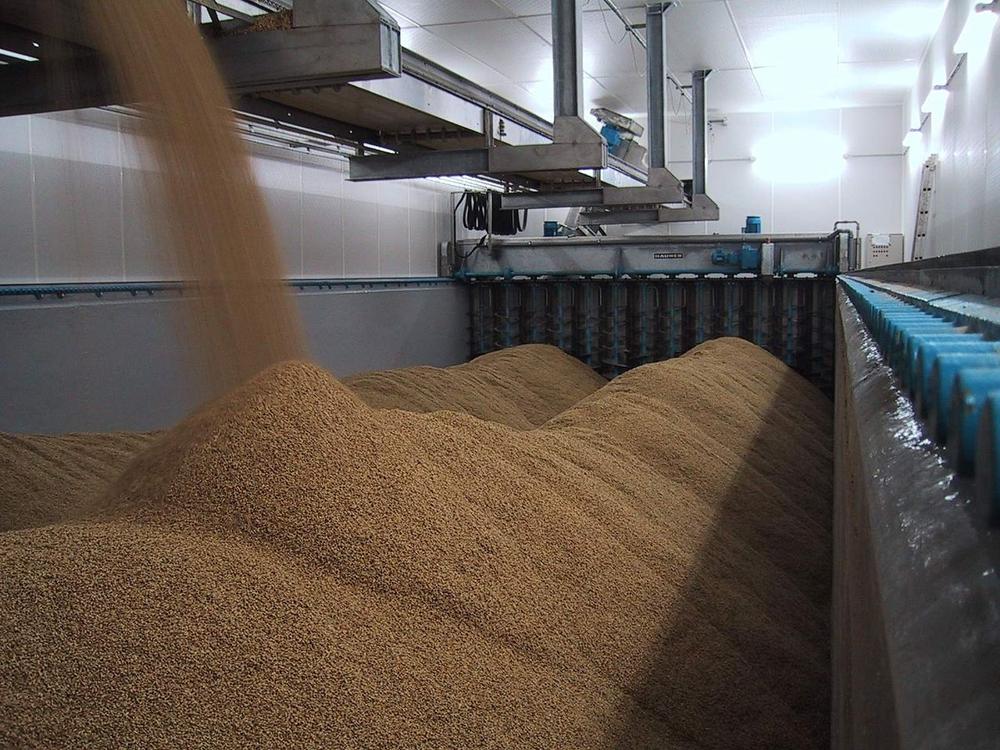Saladin box
Published July 22, 2020

What is a Saladin Box?
Saladin Malting were an early replacement for distillery floor malting for brewing and whisky making. There were two common versions: Saladin boxes and Round Saladin. Saladin boxes are horizontal boxes equipped with a spinner that move through the bed several times a day, increasing the barley thus preventing the roots from getting tangled. As the name suggests, Circular Saladin circular vessels are attached to an arm that rotates around the container. Both versions also allow air to be blown through the barley for cooling. The germinated ‘green malt’ is then transferred from the Saladin Box to the oven. Saladin boxes can be processed in batches of 200 tons bed of barley at a time between 60 cm and 80 cm deep and became obsolete when drum malting was introduced. The Glen Ord Saladin box was disposed in 1983 today there are only drum maltings. Nowadays most distilleries rely upon industrial maltings rather than producing their own malt.
Invented by a Frenchman, Colonel Charles Saladin in the late 1800s with the intent of reducing the strenuous manual labor involved in traditional floor malting. The Saladin box has largely had its day and has been replaced by the more up-to-date drum malting technology, in Scotland Tamdhu is the only distillery that still uses the Saladin box. This distillery still uses two such boxes to fill the kiln, and two steeps to fill the box. Tamdhu was, incidentally, also one of the first Scottish distilleries to install a Saladin box shortly after Glen Mhor distillery in 1950. The earliest Saladin box plant (used outside of whisky making) was at Wainford, Norfolk in 1891.
How does a Saladin box work?
With Saladin box malting, the germinating barley is placed in large boxes made of concrete in which screw turners driven by belts and pulleys arranged snails turn the grain. The mechanically working help to lift the moist and germinating barley from the ground again and again at intervals.
In addition to separating the growing barleycorns, this lifting process means that the temperature in the individual grain layers is better distributed and controlled, as well as ensuring significantly more favorable ventilation. Saladin maltings allowed for much deeper malting beds than was possible using floor maltings (and thus had a larger capacity), however these have since been overtaken by drum maltings or by industrial combined process equipment used by commercial maltsters.
An iteration
In 1873, that the first attempt at mechanisation of the malting process was introduced with Nicholas Galland’s pneumatic malt house. Unfortunately as the initial version did not allow for the turning of the grain the rootlets of the sprouting barley quickly tangled together forming an inseparable and useless mat of damp grain. Therefore in 1876 Galland introduced a modification allowing the grain to be turned twice a day by hand.
Saladin’s box malting was essentially a mechanised improvement of the same, without the need for muscle power to turn the barley. It may be fairer to call the Saladin design an impreovement rather than a new invention as Galland’s design was adopted both within the UK and the USA. Saladin’s design is still recognizable in the Thamdu maltings with the principal differences being the use of stainless steel, the scale of the individual vessels, and the use of direct drive motors rather over pulleys and belts.
FAQs
Who invented the Saladin box?
The Saladin box was invented by the French Charles Saladin in the late 1800s. His intention was to reduce the strenuous manual work involved in traditional floor malting.
Is the Saladin box still in use today?
Thamdu distillery still features a working Saladin box, however the Saladin box has mostly become obsolete and has been replaced by the more up-to-date drum malting technology.
Where was the first Saladin box fitted?
The very first Saladin malting box was installed at the now closed Glen Mhor distillery in 1950. Thamdu distillery followed shortly after.
Why did distilleries stop using Saladin boxes?
The introduction of mechanical drum maltings at Burghead by DCL in 1966 spelled the end of the Saladin boxes as they allowed for much larger capacity.
Previous
Next

